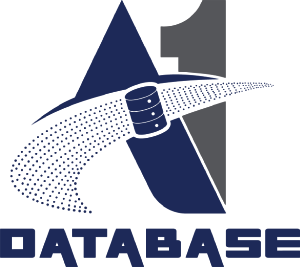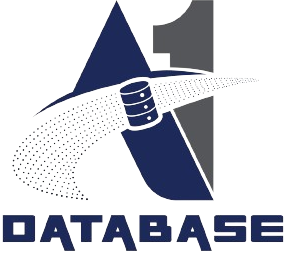- December 3, 2024
- by Admin
- Web Scraping
Similar to other worthwhile investments, data scraping is accompanied by a distinct array of challenges. In an age where data privacy is a critical topic, companies are required to maintain a careful equilibrium between data acquisition and the protection of user privacy. This involves the integration of privacy-by-design strategies in scraping efforts, focusing on the collection of only necessary information and clearly articulating the intended use of the data. The objective is to identify a harmonious point where valuable insights can be obtained without violating ethical principles.
1. Anti-Scraping Methods
Websites often implement anti-scraping techniques, including CAPTCHAs, dynamic content loading, and IP blocking, to protect their data. To navigate these obstacles, organizations need to utilize advanced scraping tools that can replicate human browsing behaviour, manage rotating proxy servers, and effectively interact with JavaScript-intensive sites. This scenario represents a technological arms race, where having a versatile and sophisticated scraping toolkit is crucial.
2. Data Decay and the Perfect Data
One of the key challenges is the identification of the “optimal” data. The quality of insights obtained is directly related to the quality of the data collected. It is crucial to ensure that the scraped data is accurate and relevant. To achieve this, it is recommended to set up validation tests, implement cleaning routines, and regularly update the scraping parameters. Companies must be attentive to data decay, which happens when information becomes outdated or incorrect over time. Thus, to improve the effectiveness of data scraping efforts, ongoing monitoring and refreshing of data sources are essential, especially in today’s business climate where customer preferences are constantly changing and becoming more demanding.
3. Ethics
Ethical considerations in data scraping are frequently overshadowed by the drive for information. However, the importance of ethical standards extends beyond compliance; it is integral to cultivating trust with clients and enhancing brand reputation. Adhering to ethical practices such as respecting user privacy, avoiding the use of non-public data, and ensuring transparency in data usage is paramount. Embracing an ethical approach fosters long-term sustainability and protects against reputational risks.
Scrutinizing and Capitalizing on Data
The core value of data scraping is found in the analysis and application of the data it generates. This tool is vital for businesses because it enables the conversion of raw data into actionable insights. To effectively carry out this process, one must employ data analytics techniques such as pattern recognition, predictive modelling, and sentiment analysis, which are essential for discovering hidden trends and customer preferences. The primary objectives of these techniques are determined by the respective business sector.
1. Pattern Recognition
The process of pattern recognition is fundamental to data analysis, as it involves the detection of repeated structures or sequences within datasets. While data scraping enables organizations to gather vast amounts of information from multiple sources, it is the pattern recognition algorithms that facilitate meaningful analysis of this data. These algorithms examine the data to uncover patterns, correlations, and anomalies that may escape the attention of human analysts. For example, in e-commerce, pattern recognition can identify purchasing trends among various demographics or reveal seasonal shifts in consumer behaviour. This information allows businesses to improve their product development, inventory management, and marketing efforts.
2. Predictive Modelling
The process of predictive modelling involves utilizing historical data to project future outcomes or trends. Through data scraping, organizations gain access to both real-time and historical information, which can be instrumental in constructing predictive models. These models rely on established patterns and behaviours to forecast future events or actions. A pertinent example can be found in the insurance industry, where predictive modelling assesses the likelihood of claims based on demographic factors, location, and historical claim data. Organizations that adeptly predict future risks and opportunities can improve resource management, avert potential losses, and leverage evolving market trends.
3. Sentiment Analysis
Sentiment analysis serves as a technique for evaluating the emotions or opinions conveyed in textual information, including customer feedback, social media interactions, and survey results. By employing data scraping methods, organizations can gather extensive amounts of unstructured text from various online platforms, which can subsequently be analysed using sentiment analysis methodologies. This process involves classifying text into categories such as positive, negative, or neutral, enabling businesses to derive valuable insights regarding customer satisfaction, brand image, and overall market sentiment. For example, analysing sentiment on social media can provide companies with an understanding of public perception regarding their products or services, highlighting potential areas for enhancement or engagement opportunities.
The Evolution of Data Extraction
The evolution of data scraping is closely linked to technological innovations. Scraping tools are now increasingly utilizing artificial intelligence and machine learning, which allow for more advanced data interpretation and decision-making capabilities. In addition, the growth of blockchain technology contributes to greater security and transparency in data transfers, potentially transforming the landscape of data scraping in the future.
Conclusion
The exploration of data scraping reveals that this practice transcends mere technical skill; it is a vital strategic imperative. Understanding the underlying principles and legal considerations, as well as effectively implementing projects and addressing challenges, positions data scraping as a multifaceted tool capable of delivering significant value to enterprises. In a landscape where data is akin to currency, organizations that neglect to harness the potential of data scraping risk falling behind their competitors. The insights gained from data scraping are crucial for shaping business strategies, fostering innovation, and establishing a competitive edge. It is essential not only to gather data but also to convert it into a strategic resource.
The potential of data scraping is vast; however, it is essential to ensure that such practices are conducted in accordance with ethical standards and regulatory requirements. Organizations must emphasize transparency, privacy, and the safeguarding of intellectual property to maintain trust and credibility within the market. Data scraping has the capacity to revolutionize business operations.
The pursuit of improved market insights, streamlined workflows, or customized customer experiences presents limitless opportunities. As we move forward, innovations in data scraping technologies and techniques will continue to transform the business landscape. It is essential for organizations to stay informed about these changes and adjust their strategies to succeed in the constantly changing digital economy. Engaging in data scraping is a continuous effort, and those who embrace it can reap significant rewards.

